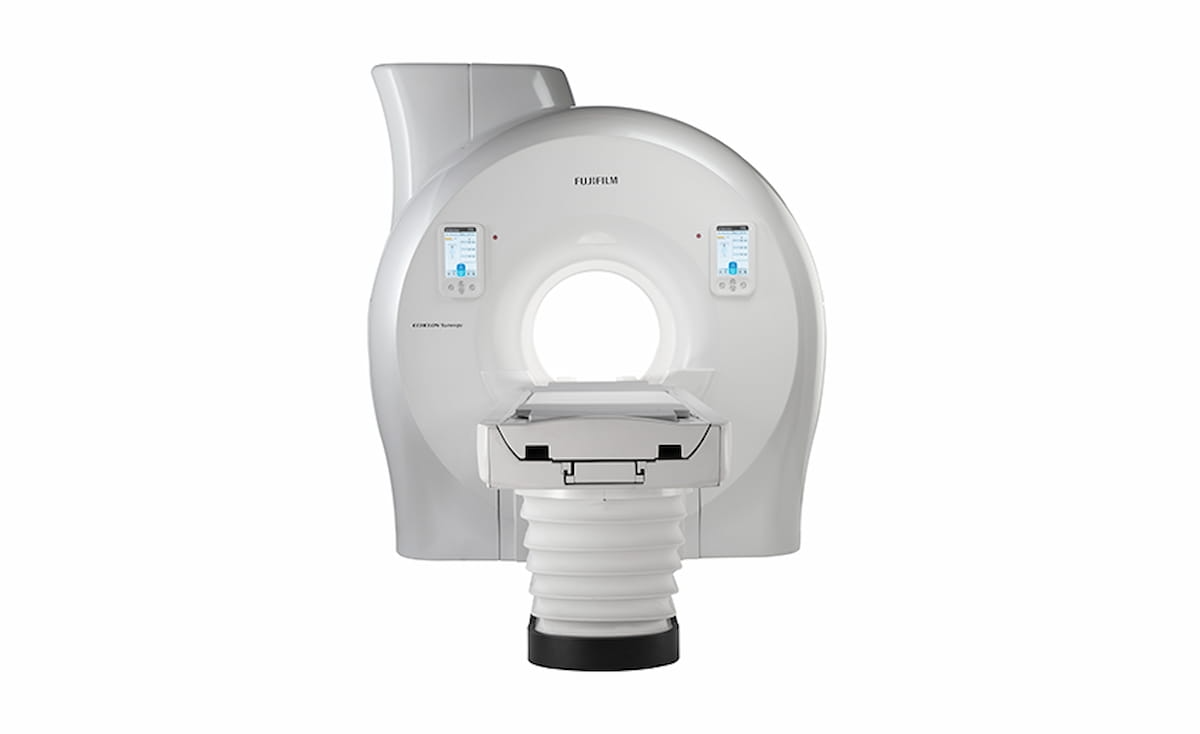Artifact Reduction Drives Technology Advances with Updated Version of Echelon Synergy MRI System
Emerging technologies included with the 10th version of the 1.5T MRI platform include Synergy DLR Clear and Synergy Vision that are geared toward mitigating common challenges with artifacts.
Fujifilm Healthcare has made artifact reduction a key focus of advances with the newly launched 10th version of the Echelon Synergy 1.5T magnetic resonance imaging (MRI) system.
Offering multiple in-bore cameras and the use of real-time tracking from scans to correct motion-compromised raw data, the updated Echelon Synergy device’s combination of Synergy Vision and StillShot artificial intelligence (AI) mitigates motion artifacts, according to Fujifilm Healthcare.
Mitigating artifacts is a key driver of new technological advances included in version 10 of the Echelon Synergy 1.5T MRI system. (Image courtesy of Fujifilm Healthcare.)

The company added that the Echelon Synergy’s inclusion of the AI-powered algorithm DLR Clear addresses the challenging truncation artifact without the need for extended scan time.
“With the v10 (Echelon Synergy), technologists can now apply our RADAR radial sequence with our iterative iRCM IP-Recon processing to mitigate spike artifacts, resulting in clear, high-quality images with reduced motion artifact,” noted Shawn Etheridge, the executive director of modality solutions for Fujifilm Healthcare Americas Corporation.
Fujifilm noted that the upgraded standard software features with version 10 of the Echelon Synergy 1.5T MRI will be provided to current customers free of charge.
GE HealthCare Debuts AI-Powered Cardiac CT Device at ACC Conference
April 1st 2025Featuring enhanced low-dose image quality with motion-free images, the Revolution Vibe CT system reportedly facilitates improved diagnostic clarity for patients with conditions ranging from in-stent restenosis to atrial fibrillation.
New AI-Enabled Portable Ultrasound May Facilitate 50 Percent Reduction in Cardiac Imaging Scan Time
March 28th 2025Artificial intelligence (AI)-powered measurement capabilities provide key features with the Compact Ultrasound 5500CV device, which was unveiled at the American College of Cardiology (ACC) conference.
New Collaboration Offers Promise of Automating Prior Authorizations in Radiology with AI
March 26th 2025In addition to a variety of tools to promote radiology workflow efficiencies, the integration of the Gravity AI tools into the PowerServer RIS platform may reduce time-consuming prior authorizations to minutes for completion.